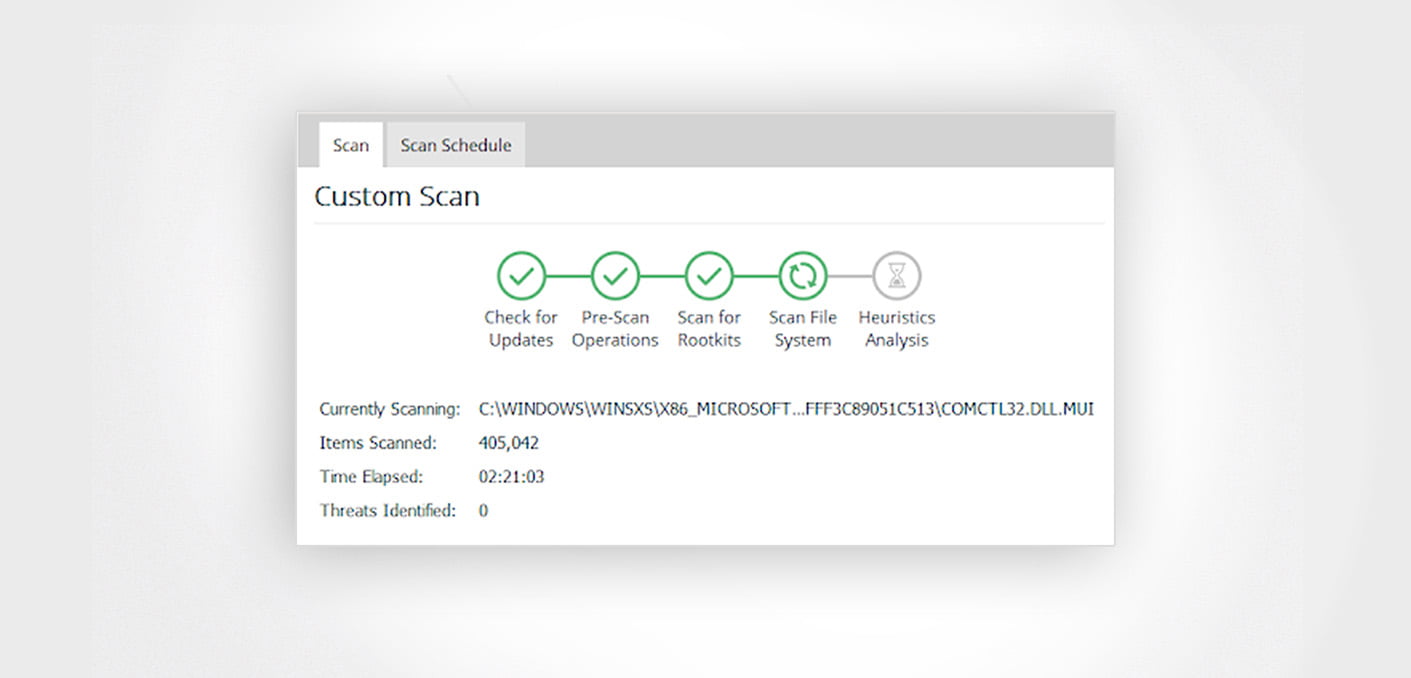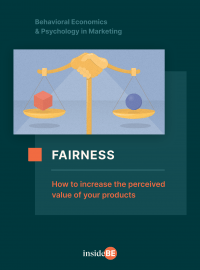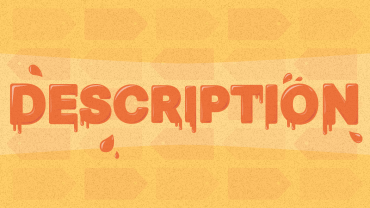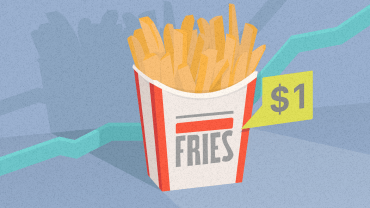Perceived Value – Use Time, Effort, and Language To Increase Your Product’s Perceived Value

Your product can be a world-beater, but it won’t be beating anything if people don’t see its value. You can increase it easily by adding a few right words.
In this article, you’ll discover:
- Why you should be interested in perceived value and why it matters;
- Why it’s so important to show your customers that you put time and effort into creating your products and services;
- How you can increase sales by adding vivid language and describing the story behind your product;
- How the power of context can be used to your advantage.
The ugly truth is that we’re clueless about prices. You might be thinking, “What are you talking about, Roman? Do you really think I don’t know how to spend my own money?” But before you rage-quit, hear me out! I can explain.
Imagine the following situation:
It’s a cold evening in a post-pandemic world. You’re on your way home from your 9-to-5, looking forward to spending a cozy evening with some snacks as you binge-watch the latest Netflix Original. Then the nightmare scenario kicks in. You don’t have your keys. You start to freeze and begin feeling dizzy.
Nobody’s home, so the situation seems like a total disaster. In a rush of cold sweat, you manage to reach for your phone and Google a locksmith. You find one, the last one open at this hour. Okay, there’s hope on the horizon…
But when she arrives (I bet you didn’t see that coming), the locked door puts up a pretty good fight. It ends up taking half an hour and a lot of sweat, but eventually the door opens and the lock is changed. What a relief! Now you don’t have to ask your neighbor — the grumpy old cat lady who complains about everything and watches everyone from her window — to spend the night at her place.
The locksmith then charges you €100 EUR. You kindly thank her, hand over the money, and even add a €10 EUR tip. She saved you. BUT…
Prices are often relative
What if she came, solved the problem in under two minutes, and then charged you the same: €100 EUR? What?! €100 EUR for just two minutes of work?! She can’t possibly be serious! But think about it for a second. Even if she got rid of your problem far quicker than the first scenario, you feel robbed. Do you see the difference?
That, my friend, is what we call perceived value. Simply put, you don’t see her work to be worth €100 EUR if she only spent a few minutes on it.
We use the time and effort of the provider as a proxy. When somebody works hard, they deserve more money. A simple rule of thumb.
This locksmith example is a true story, by the way, mentioned by Dan Ariely on his YouTube channel.
Now you see what I mean. Price is often relative and we don’t know what the appropriate price is. In situations like these, we use the time and effort of the provider as a proxy. When somebody works hard, they deserve more money. A simple rule of thumb.
This has very easy business implications. When you give the client a project proposal, you need to be clear about how many hours the work will take you and what exactly you’ll be doing. Your clients will generally have no idea what it takes to get the work done and as a result, they won’t know why they should pay you so much either.
This phenomenon has been supported by several studies. Researchers agree that the effort customers see behind any given product can boost their perceptions about the service and quality of the product because they’ll feel gratitude. Even when the quality of the service remains the same, consumers feel like they should reciprocate the efforts of the provider.

Discover ground-breaking ideas and fascinating solutions.
This is especially important in an online environment. Why? Because it’s a lot harder to show the customer all of the efforts that were put into the service.
Show how much time and effort you put into your products
This is how the term labor illusion came to fruition. And no, it’s not that thing we all do – pretending that we’re working when we’re actually just watching cat videos.
Fairness
People can’t evaluate the intrinsic quality of what they’re getting, that’s why they use time and effort as a reliable proxy.
You’ve already imagined that nightmare scenario from earlier, so now let’s roll with a more pleasant example. Imagine it’s summertime and you’re about to book a plane ticket to your dream vacation destination.
However, when you try to find potential flights using a travel search engine, it seems to be taking forever. You begin to feel pretty annoyed. But what if instead of a white screen with a loading bar you see a changing list of sites that the engine is searching at the moment along with an animation of the air fares being compiled as they’re “found”? Let’s call this site the transparent site.
60% of participants actually preferred waiting longer on a transparent website than on a webite that showed them the results instantly.
This is actually a description of an experiment performed by Harvard researchers Buell and Norton. And what did they find? People didn’t mind waiting when they saw the work that was unfolding.
The search engines looked like this — the transparent site is on the left-hand side while the “annoying” one is on the right-hand side:

Source: The Labor Illusion: How Operational Transparency Increases Perceived Value
Not only did people prefer the transparent site that indicated the effort being exerted over the one with just the progress bar (even though both sites took the same amount of time to provide the same exact results), but 60% of participants also actually preferred waiting longer on the transparent site than on a site that showed them the results instantly. That’s how powerful perceived value can be.
This illusion of labor behind the online self-service was meant to replace the effort that people normally see when they take care of the matter personally. As Buell and Norton put it, the labor illusion should replace the blood, sweat, and tears of real-life workers.
A good example of labor illusion like this would be antivirus software. For instance, Malwarebytes:

The software program shows you exactly what’s going on at that very moment and what file is currently being scanned.
You should use this technique anytime your client is unable to see how the work is being carried out. One way would be to show every step of the process in a little progress bar in your e-mail signature when communicating with clients. What they’ll see at the end of your e-mail is a similar progress bar as the one found in Malwerbytes, but instead of “Scan File System,” they’ll see exactly what you’re working on, such as: “copywriting” or “finalizing solution proposal.”
An easier alternative would be a weekly update e-mail summarizing what was completed last week and what the next steps are. They’ll see what the work involves and will value your work much more.
Humans are sensitive to fairness
And why is that exactly? Well, as it so happens, people are very sensitive to fairness, sometimes to the extent where it can lead to making irrational decisions.
Since we’re now living in the 21st century, one of the most irrational decisions one could ever imagine would be passing up on free money. I mean… why would you? Perhaps the most famous research illustrating this fact involved what was known as the ultimatum game.
The researcher gives two people a certain amount of money. The first person, who takes on the role of the proposer, must distribute this amount between him and the other person – the responder. The responder can either accept or reject their proposal. If the responder chooses to accept it, then they both can divvy up the cash. If the responder chooses to refuse the proposer’s offer, then they both walk home empty-handed.
Now, why on earth would somebody reject the offer? It’s a win-win situation. You’re going home with money. Except, it has been found that if the responder receives an offer in which they get just 20% of the total amount, then there’s a 50% chance of them rejecting that offer. And as the offer gets more unfavorable for the responder, the rejection rate increases exponentially.
Just like in the ultimatum game, we also perceive fairness in a price context. If the customer feels like you don’t deserve the price that you’re charging them, then they won’t be very happy about it. That’s why it’s so important to maximize the perceived value of what you’re offering.
A few words can increase the perceived value
Let’s be more specific. How can you increase the perceived value of your product? The answer is easier than you might think. In fact, sometimes adding just a couple new words is enough to do the trick. Imagine this ideal scenario – it’s Friday night and you’ve just arrived at your favorite bar with the squad. You notice there are two new beers on the menu for the same price.
The first one is an India Pale Ale (IPA) with the following description:
“An authentic IPA craft beer made by top American brewers. The beverage owes its perfectly balanced, bitter taste to the unique nugget hops, which are added with perfect timing in the last 15 minutes of the brewing process. That’s why they produce just the right amount of alpha acids without sacrificing the beer’s citrusy flavors…”
I could go on and on. The second beer is also an IPA. But this time, it’s just an IPA for the same price and without a juicy description. Which one would you pick?
The answer is likely the first one. But why? You just read a couple of sentences about hops, which frankly, you probably don’t even know much about. Hell, even I don’t know anything about it but I would give it a try right now.
But the point is not to educate the customer. The point is to show them the value behind the product. To let the customer picture the manufacturing process in their head and imagine the brewers working hard to deliver the best possible experience to their table. Essentially, the product is being described in the way it deserves to be described.
The point is to show customers the value behind the product. To let them picture the manufacturing process in their head and imagine the associated hard work.
And sometimes the right description can be as simple as adding just a few words. The Behavioral Insights Team (BIT) and the World Resource Institute (WRI) wanted to increase perceived value by using different wording. Their goal was to convince meat-eaters to order a vegetarian dish. All they did was add some indulgent words into the descriptions, like “mild and sweet” or “comforting,” or they highlighted the provenance of the food, like ‘field grown’.
This alone helped increase the customers’ perceived value of the dishes and the results speak for themselves. According to BIT, after replicating this intervention, sales of vegetarian options increased by up to 70%, all with the help of just a few additional words. Again, 70%. This is no rookie number.
But surely restaurant menus aren’t the only place that can benefit from science-based copywriting. As mentioned before, an online environment is the ideal place to work with this concept. Take Weber for example: an online grill retailer I recently stumbled upon. The description of their merch is proof that you can improve the description of any product to increase its perceived value:

I don’t know about you, but I’m sold!
If you’d like to know more about other examples like the ones mentioned above, then be sure to check out this article for some inspiration.
Context matters a lot
Witty wordsmithing is not the only way to highlight the value of your product. The first thing everybody learns in behavioral economics is how the environment can shape our behavior. It’s the same story with our perception of value.
What I have in mind is pretty straightforward: Where do you think you’d be more willing to spend €15 EUR for a glass of wine — at your local tavern or at a luxurious restaurant?
Witty wordsmithing is not the only way to highlight the value of your product. The first thing everybody learns in behavioral economics is how the environment can shape our behavior.
Research shows that a restaurant’s physical environment has a direct influence on the customers’ price perception. The authors explicitly advise managers to provide customers with an environment that reflects the value of their products.
The same thing goes for your product’s packaging. The way people perceive the packaging of a product has a direct influence on how they perceive the product’s quality. For example, according to a paper by French researchers, it might be a better idea to use bottles instead of cans.
So don’t forget that form often beats content. Before your next presentation, print your proposal on higher-quality paper and make sure your PowerPoint is looking sharp. Your client will see the value before you even open your mouth.
They say “all that glitters isn’t gold.” But if you are selling gold, then remember it needs to glitter.
Key Takeaways:
- Show the customer the value behind the product. Describe the effort and time you’ve put into it to provide the customer with the best product or service possible.
- Use descriptive, vivid, and engaging language, and be sure to share the story behind your product.
- Context matters. The perceived value of your product also depends on the form and the environment. Don’t underestimate it. It’s often more important than the product itself.





